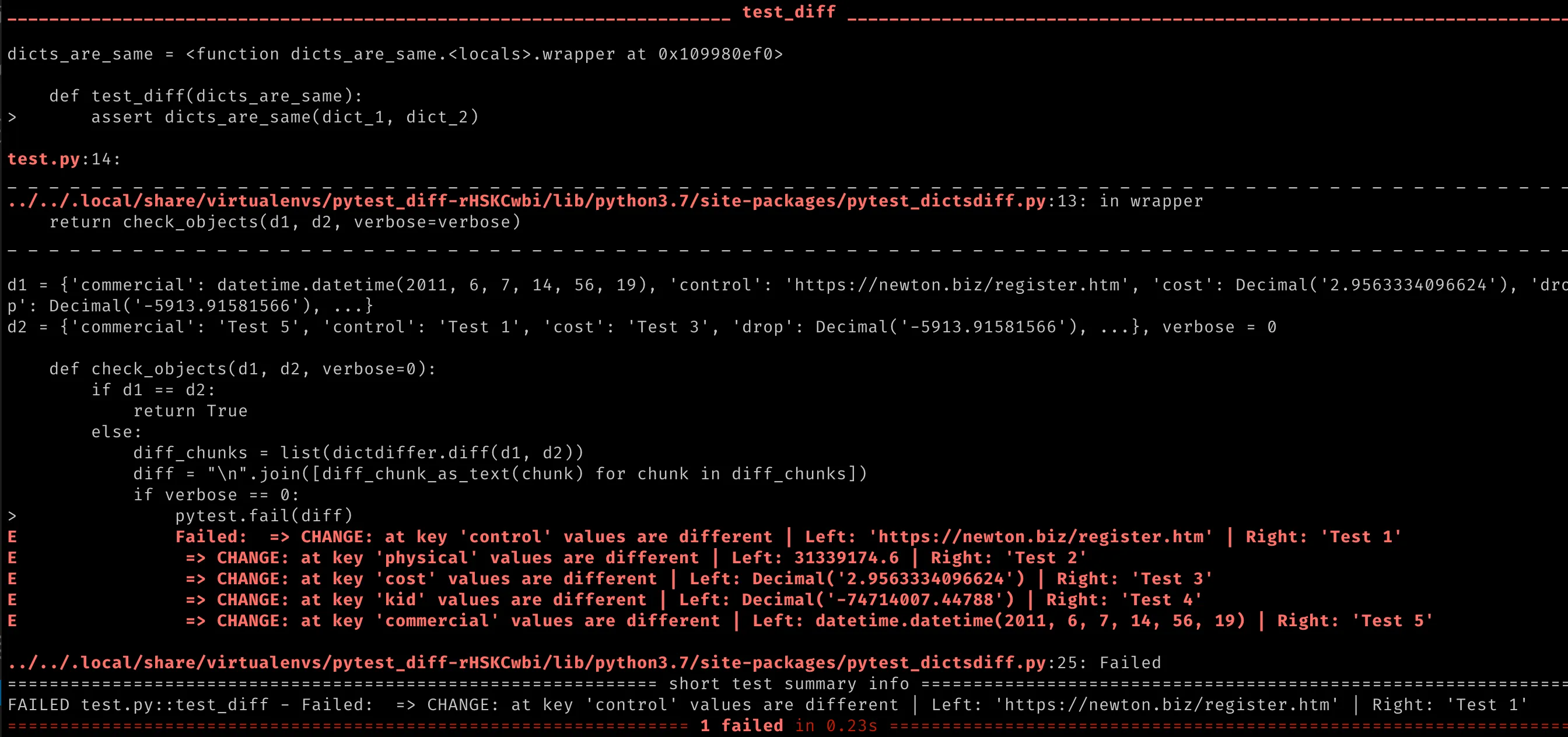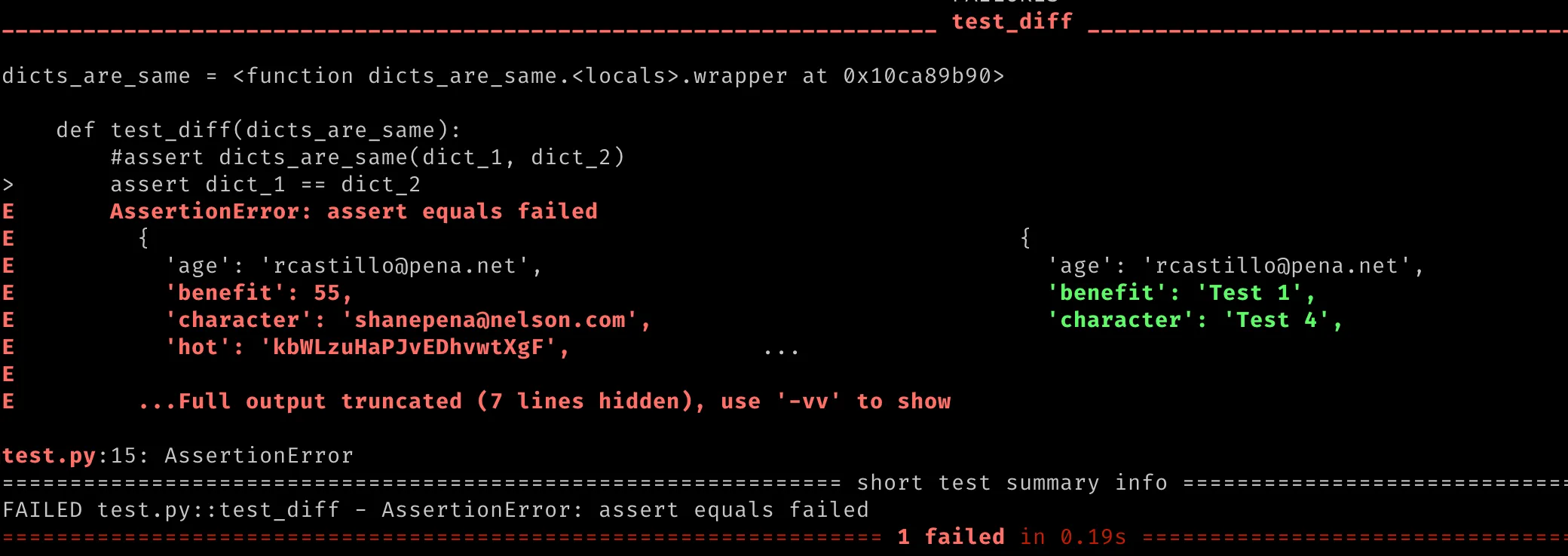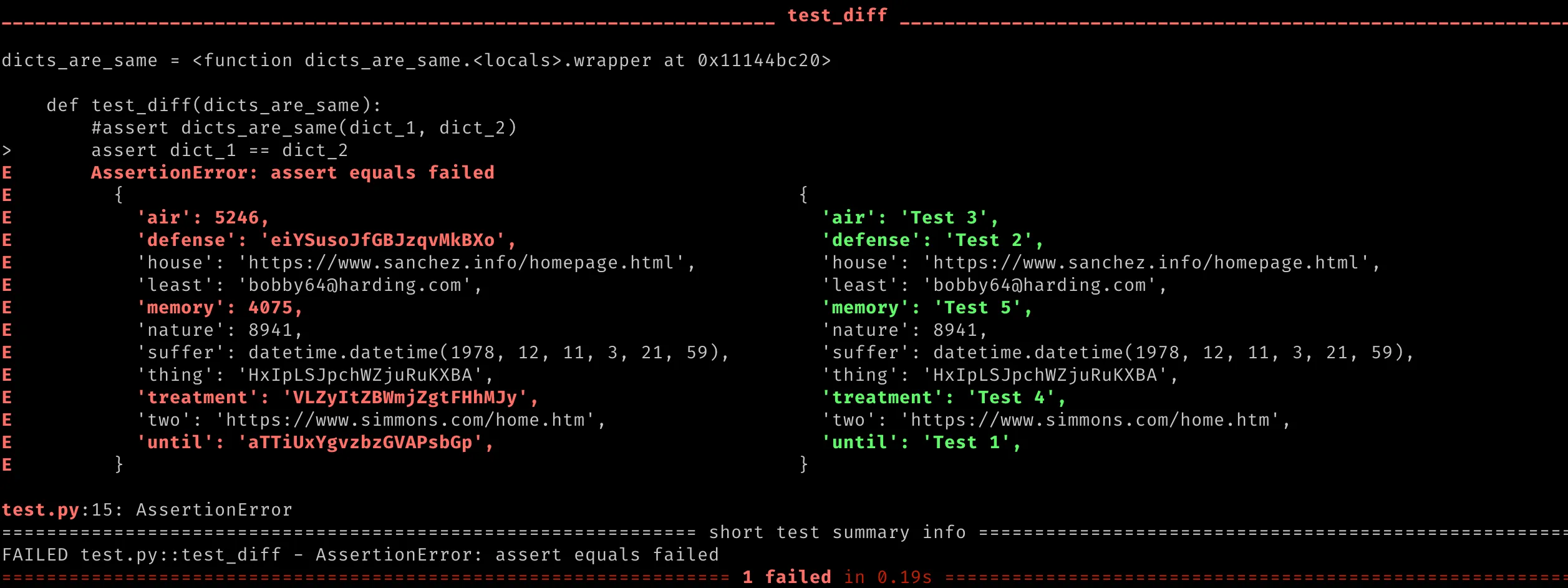Better diffs in pytest
How often do you compare dictionaries in (unit) tests? How do you handle diff outputs to make them as readable as possible?
Let’s create a simple test.
def test_diff(): assert {"x": 1} == {"x": 2}The default test summary looks like this:

The dictionaries are very small so we can see the difference without any issues. What if the dictionaries are bigger? Look at this example.
from faker import Faker
fake = Faker()dict_1 = fake.pydict(nb_elements=10)dict_2 = dict_1.copy()dict_2[list(dict_1.keys())[1]] = "Test 1"dict_2[list(dict_1.keys())[2]] = "Test 2"dict_2[list(dict_1.keys())[3]] = "Test 3"dict_2[list(dict_1.keys())[5]] = "Test 4"dict_2[list(dict_1.keys())[6]] = "Test 5"
def test_diff(): assert dict_1 == dict_2The result.

It gives you information about differences between both dictionaries, line by line. It looks better than the default diffs but I would like to present a better option.
pytest-icdiff
My favorite solution, pytest-icdiff. It displays a better diff summary and we don’t need additional code!
Look at this. Use the same example as at the beginning.
from faker import Faker
fake = Faker()dict_1 = fake.pydict(nb_elements=10)dict_2 = dict_1.copy()dict_2[list(dict_1.keys())[1]] = "Test 1"dict_2[list(dict_1.keys())[2]] = "Test 2"dict_2[list(dict_1.keys())[3]] = "Test 3"dict_2[list(dict_1.keys())[5]] = "Test 4"dict_2[list(dict_1.keys())[6]] = "Test 5"
def test_diff(): assert dict_1 == dict_2The result.

Let’s try to use -vv option.

How about you? Do you know better options?